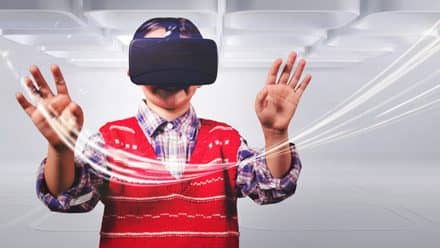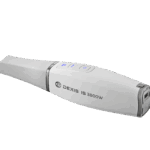With all the signs pointing to teledentistry playing an increasing role in new patient consults and orthodontic treatment monitoring, the AAO reminds orthodontists to practice within parameters that protect patient health and safety.
By Greg Thompson
In the wake of the direct-to-consumer (DTC) movement and more use of teledentistry, orthodontists are increasingly being asked to rethink their workflow. The COVID-19 pandemic only reinforced the utility of teledentistry within orthodontic treatment, and many orthodontists used it to monitor patients while offices were closed.
Prudent use of teledentistry has cut down on the number of in-office visits for routine checks and virtual consults are even being used with prospective patients. “Aside from the pandemic, American Association of Orthodontists [AAO] members are constantly incorporating new technology, including teledentistry, into their practice models,” says Chris Roberts, DDS, MS, outgoing president of the AAO. “Teledentistry will certainly be a part of orthodontic treatment going forward, and it is for this reason that the AAO seeks to ensure that teledentistry is practiced within parameters that protect patient health and safety.”
The in-person parameter
To that end, the AAO’s Legal and Advocacy Department worked with the AAO Board of Trustees to approve six teledentistry parameters. At the top of the list is In-Person Examination/Evaluation.
The parameter states:
The AAO believes there are certain diagnoses and evaluations that can only be performed in-person or are best performed in-person (x-rays, etc). There are several categories of problems or conditions that many dentists typically look for as part of a physical examination at the outset of traditional in-person treatment. This can include potentially serious conditions, such as oral cancer, periodontal problems, advanced decay, gum disease, etc. With this in mind, and although it might make sense to perform an initial consult via teledentistry, the AAO believes teledentistry TREATMENT should not occur before a physical, in-person examination/evaluation of the patient has occurred by a state-licensed dentist.
Integral role of in-person visits
The top position of the in-person parameter is not a random choice. In addition to comprehensive radiographs essential to developing an accurate diagnosis and treatment plan, Roberts stresses that patients should be aware that supervised visits (in person) with orthodontists play an integral role in the treatment’s success. Particularly if problems arise, Roberts points out, “Patients need to feel comfortable asking their orthodontist questions about their overall treatment. Ultimately, if an orthodontist has not established a doctor-patient relationship by examining and diagnosing a patient before treatment begins, the patient’s health and safety may be at risk.”
The AAO’s concerns about teledentistry have been echoed by colleagues in the American Dental Association in the form of well-documented missives to the Federal Trade Commission. A June 2019 letter contends that a prominent DTC company provides “virtually no care and contrary to its prominent and repeated claims…does not use teledentistry.”
DTC arrangements
As for reports that the SmileDirectClub (SDC) has started offering their system through actual orthodontists/dentists, not enough data is in to assess how it’s going. “The AAO has not been provided with sufficient information from SDC to evaluate how any arrangement with orthodontic practices is structured,” confirms Roberts, who also serves as an adjunct clinical professor of dentistry at the University of Michigan. “Therefore, the AAO cannot comment on this arrangement. In general, the AAO would recommend that any arrangement between a DTC company and an orthodontic practice would incorporate the health and safety protections outlined in the AAO’s teledentistry parameters.”
AAO position mischaracterized
Roberts contends that some DTC companies have mischaracterized the AAO’s position as being “against” teledentistry, but he refutes this notion. “This could not be further from the truth,” Roberts says. “A great example is during the pandemic. A large number of AAO members utilized teledentistry in some form to monitor and communicate with patients when offices were closed. For this reason, the AAO strongly supports incorporating teledentistry methods into treatment. However, AAO members should include proper precautions to protect patients, including radiographs before beginning treatment and an in-person exam before appliance delivery.”
Convenience and access for patients are two elements that are relatively uncontroversial, and Roberts regards teledentistry as a valuable tool particularly when it allows patients to reach doctors more quickly and easily. As a general principle, the AAO strongly supports access to care for orthodontic patients, but Roberts is adamant; teledentistry should be accessible with proper safeguards for patient health and safety.
The rest of the parameters
Patient health and safety is the cornerstone of the remaining five parameters, which are as follows:
- Initial Consultation: Initial consultations for the purpose of making a preliminary diagnosis and treatment recommendation may be conducted by means of teledentistry by a state licensed dentist. However, the creation of a final treatment plan and/or the initiation of dental treatment should not occur until after the state-licensed dentist has performed an in-person examination of the patient.
- Teledentistry During Active Treatment: During active treatment, progress evaluations should be conducted by a state-licensed dentist on a regular basis. To the extent that a patient requests to see in-person the state-licensed dentist providing teledentistry services for any reason (follow-up care, emergency, etc), the AAO believes that the dentist should provide the opportunity to see the patient in person at the location of the original physical in-person consultation.
- Doctor Information: Regardless of modality, the AAO believes patients should always be aware of their treating dentists’ (or potential dentists’) information, including where the dentist treating him or her is located, or otherwise how to reach his or her dentist if needed. Furthermore, the AAO believes teledentistry laws should require those dentists who are performing teledentistry services to disclose (via public website, etc) their name, license number, telephone number, practice address, and education credentials to patients or the public who may be using or interested in their teledentistry services.
- Other Laws/Standards: The AAO believes all other laws and standards, including those relating to dentistry and dental supervision, should be followed to the extent they are not directly and expressly addressed by any new teledentistry laws.
- State Oversight: The AAO believes that states, including state dental boards, should ensure that teledentistry services are provided in compliance with their state business ownership, professional practice laws, and any relevant standards of care. The AAO believes that dental boards should have increased investigative and enforcement authority over non-licensees involved in administering or performing teledentistry services. OP
Greg Thompson is a freelance writer for Orthodontic Products.









